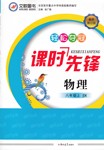题目内容
1.The relationship between exercise and cancer has long both intrigued and puzzled oncologists and exercise physiologists.Exercise is strongly associated with lowered risks for many types of cancer.At the same time,exercise involves biological stress,which typically leads to a short-term increase in inflammation(发炎) which can contribute to higher risks for many cancers.
Now,a new study in mice may offer some clues into the exercise-cancer paradox.It suggests that exercise may change how the immune system deals with cancer by boosting adrenaline(肾上腺素),certain immune cells and other chemicals that,together,can reduce the severity of cancer or fight it off altogether.
To try to better understand how exercise can both elevate inflammation and simultaneously protect the body against cancer,scientists at the University of Copenhagen in Denmark and other institutions decided to closely examine what happens inside mice at high risk for the disease.
So,for the new study,they began by gathering a group of adult lab mice.These animals generally like to run.
The scientists then implanted melanoma(黑素瘤) skin cancer cells into the mice before providing half of them with running wheels in their cages while the other animals remained sedentary.After four weeks,far fewer of the runners had developed full-blown melanoma than the sedentary mice and those that had been diagnosed with the disease showed fewer and smaller lesions.
They drew blood from both the exercising and sedentary animals and cells from any tumors in both groups.As expected,they found much higher levels of the hormone adrenaline in the blood of the exercising animals,especially right after they had been working out on the wheels but also at other times of the day.The body releases adrenaline in response to almost any type of stressful experience,including exercise.
They also found higher levels of interleukin-6in the blood of the runners.This is a substance that is released by working muscles and is believed to both increase and decrease inflammation in the body,depending on where and how it goes to work.
Perhaps most important,they found much higher numbers in the bloodstreams of runners than in the sedentary mice of a type of immune cell named natural killer cells that are known to be strong cancer fighters.
So the scientists repeated their original experiment multiple times,inducing cancer while allowing some mice to run and others to sit.In some of these follow-up experiments,the scientists injected the runners with a substance that blocked the production of adrenaline and gave sedentary animals large doses of added adrenaline.
What they now found was that when running mice could not produce adrenaline,they developed cancer at the same rate as the sedentary animals,while the sedentary animals that had been injected with extra adrenaline fought off their tumors better than other sitting mice.
More remarkably,the scientists determined that adrenaline seemed to be sending biochemical signals to some of the animals'IL-6cells,making them physiologically more alert,so that when a tumor began to develop in the affected animal,those IL-6cells in turn activated the natural killer cells in the bloodstream and actually directed them to the tumors,like minute guide fish.
With these results,"we show that voluntary wheel running in mice can reduce the growth of tumors,and we have identified an exercise-dependent mobilization of natural killer cells as the underlying cause of this protection,"said Pernille Hojman,a researcher at the University of Copenhagen who oversaw the new study.It perhaps provides one more incentive for us to get up and move.
58.In the first experiment,which one is the most important result the scientists found?A
A.natural killer cells are much more in the bloodstreams of runners than in the sedentary mice.
B.levels of interleukin-6are higher in the blood of the runners than in the sedentary mice.
C.exercise such as running seemed to help the mice fight against the cancer.
D.adrenaline can reduce the severity of cancer or fight it off.
59.In the follow-up experiments,the scientists foundB?
A.the hormone adrenaline has much higher levels in the blood of the exercising animals,
B.how these elements in the runners-their increased adrenaline,IL-6,and natural killer immune cells fight against tumor.
C.interleukin-6can both increase and decrease inflammation in the body,depending on where and how it goes to work.
D.what happens inside mice at high risk for the disease.
60.According to the study,we can infer the fundamental substance to fight the cancer off isC
A.adrenaline
B.interleukin-6
C.natural killer cells
D.genes.
分析 本文是一篇科教类阅读,主要探讨了运动对癌症的作用及相关的研究.适当的合适的运动对身体是有极大的好处的,过量的运动损坏身体.
解答 58. A考查细节推理,根据文章倒数第四段的Perhaps most important,they found much higher numbers in the bloodstreams of runners than in the sedentary mice of a type of immune cell named natural killer cells that are known to be strong cancer fighters.或许更重要的是相比于不动的老鼠,他们在跑步者的血流中发现了更多的一种名为自然杀手细胞的免疫细胞--这种细胞是很强的癌症抵抗者.可知本题答案为A选项.
59.B考查细节推理,根据文章倒数第二段More remarkably,the scientists determined that adrenaline seemed to be sending biochemical signals to some of the animals'IL-6cells,making them physiologically more alert,so that when a tumor began to develop in the affected animal,those IL-6cells in turn activated the natural killer cells in the bloodstream and actually directed them to the tumors,like minute guide fish.更重要的是科学家判断出肾上腺素似乎会发送一些生化信号给动物的一些IL-6细胞,这使得它们心理上更加警觉,因此当肿瘤开始在受感染的动物体内形成时那些IL-6细胞反过来会激活血流中这些自然杀手细胞并且事实上它们像指南鱼那样指引它们去肿瘤那里.结合选项,故选B
60.C考查细节推理,根据文章最后一段的…we have identified an exercise-dependent mobilization of natural killer cells as the underlying cause of this protection.我们已经确定了自然杀手细胞的运动是这种保护(抗癌)的潜在原因.可知本题答案为C选项.
点评 本文是一个科教类阅读,题目涉及多道细节理解题,做题时结合原文和题目有针对性的找出相关语句进行仔细分析,结合选项选出正确答案.推理判断题也是要在抓住关键句子的基础上合理的分析才能得出正确答案,切忌胡乱猜测,一定要做到有理有据.

 文敬图书课时先锋系列答案
文敬图书课时先锋系列答案